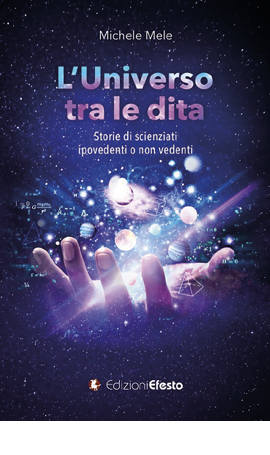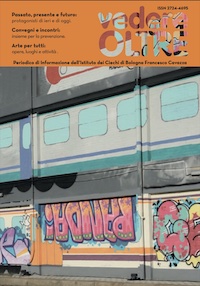In mid-July, as soon as I learned of the existence of this book, I wrote to the publisher to ask if there was a digital version and he promptly replied: “Not at the moment, maybe in a few months.” So, I got a CCTV and pored over this handy little book in which Michele Mele, born in 1991, a visually impaired researcher in combinatorial optimization at the University of Sannio, tells the stories of nine visually impaired or blind scientists and a woman scientist from the past and present. The ten biographies are presented in chronological order, but the author makes frequent references to the stories of the other characters, making the reading enjoyable and consistent. Euler, whom we Italians know as Eulero, is undoubtedly the most famous protagonist. The others are little known to most, but it is worth getting to know them to understand, also from their words in the case of the living, how they managed to pursue scientific careers despite their visual impairment.

As Francesco Guccini put it: “with smaller wings for the same flight.” If Euler’s theorems are fairly well known, that of Baggett, another blind mathematician, is the stuff of specialists. But Baggett aroused so much confidence in his colleagues that he was elected head of his university’s mathematics department. The author also writes about American mathematician Nemeth who invented the code for teaching higher mathematics to the blind as well as the correct way to dictate mathematics aloud (MathSpeak), which then was included in teacher training courses in general, and not only those supporting the visually impaired. The author identifies the trust of parents, educators, peers, and colleagues as the condition for enabling persons living with vision loss to fulfil their aspirations, thus releasing the enthusiasm that stimulates them to make the most of the mind’s potential. “It is not that difficult to create an inclusive environment, an environment that allows the minds of the blind and visually impaired to follow a natural vocation.”
Continuing in the words of Dr. Mele: “In an almost exclusively visual world such as science, the abstraction attainable by a mind not constrained by a sometimes-misleading sense such as sight, can unveil new paths never before traveled […] Although identified as synonyms, seeing and observing are not quite the same thing. He who sees merely receives a light impulse on his retina, he who observes has a precise objective. In the case of an experiment, it is the understanding of what he sees. In a nutshell, one who is looking sees but one who sees does not necessarily observe. ’The other protagonists are mathematicians and physicists, two engineers, a doctor, an entomologist and two chemists. I want to mention the only woman in the book, Dr. Mona Minkara, “the first blind female academic of the Islamic faith in the history of the United States” who, in 2019, was awarded the Holman Prize, an award dedicated to the memory of the British blind adventurer James Holman. And now that I have read this paper book with my CCTV, I realize that the digital version is unimportant because The Universe Between Our Fingers deserves to be read above all by sighted people in order to break down those prejudices that exclude people living with vision loss from scientific disciplines and do not allow them to express their potential by making an intellectual contribution not mediated by the sense of sight.
With this book, Michele Mele was right because in April 2022 he received the Logos Cultura Special Prize at the Città di Cattolica literary review among thousands of competitors from all over the world.





.png)